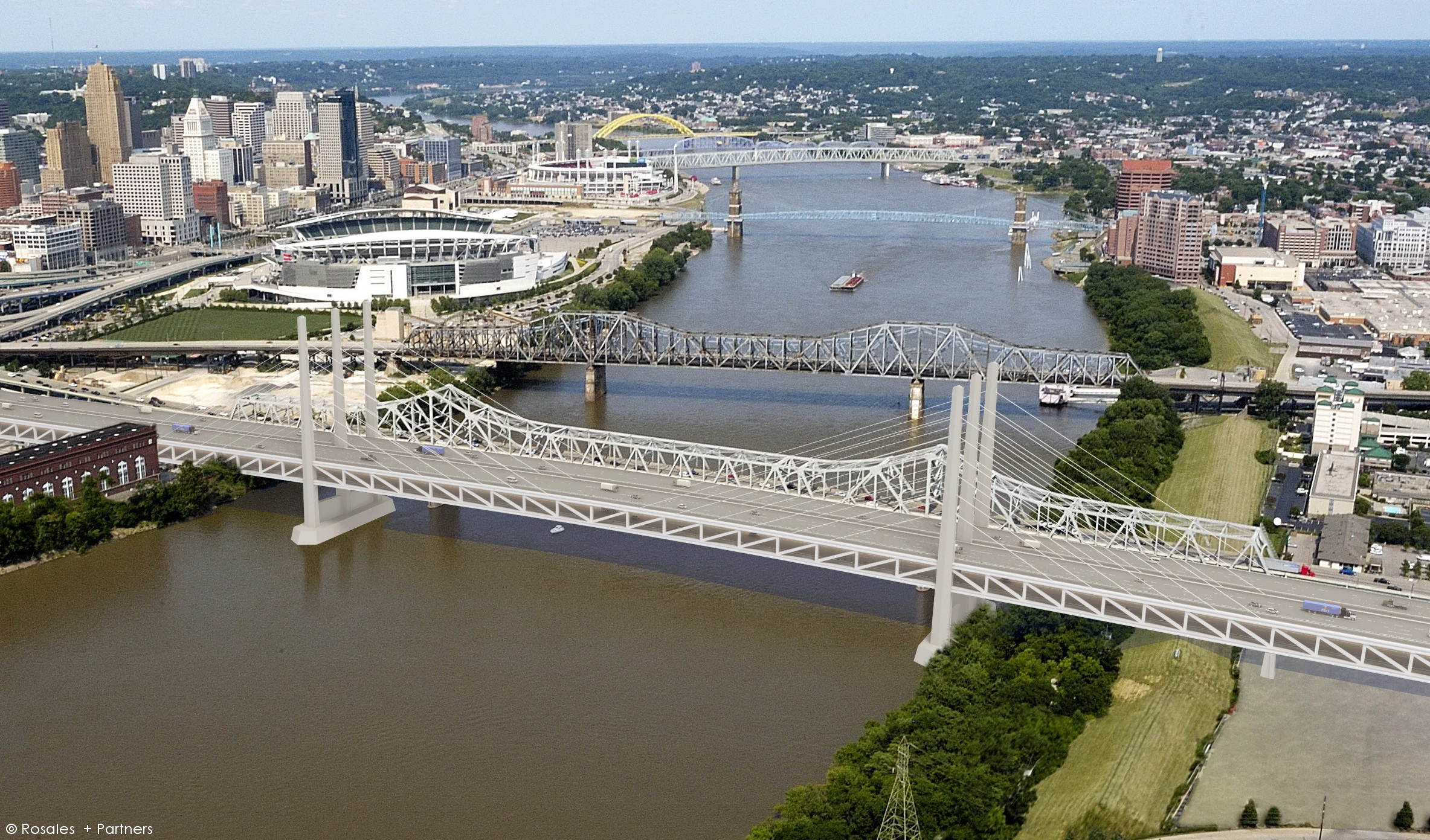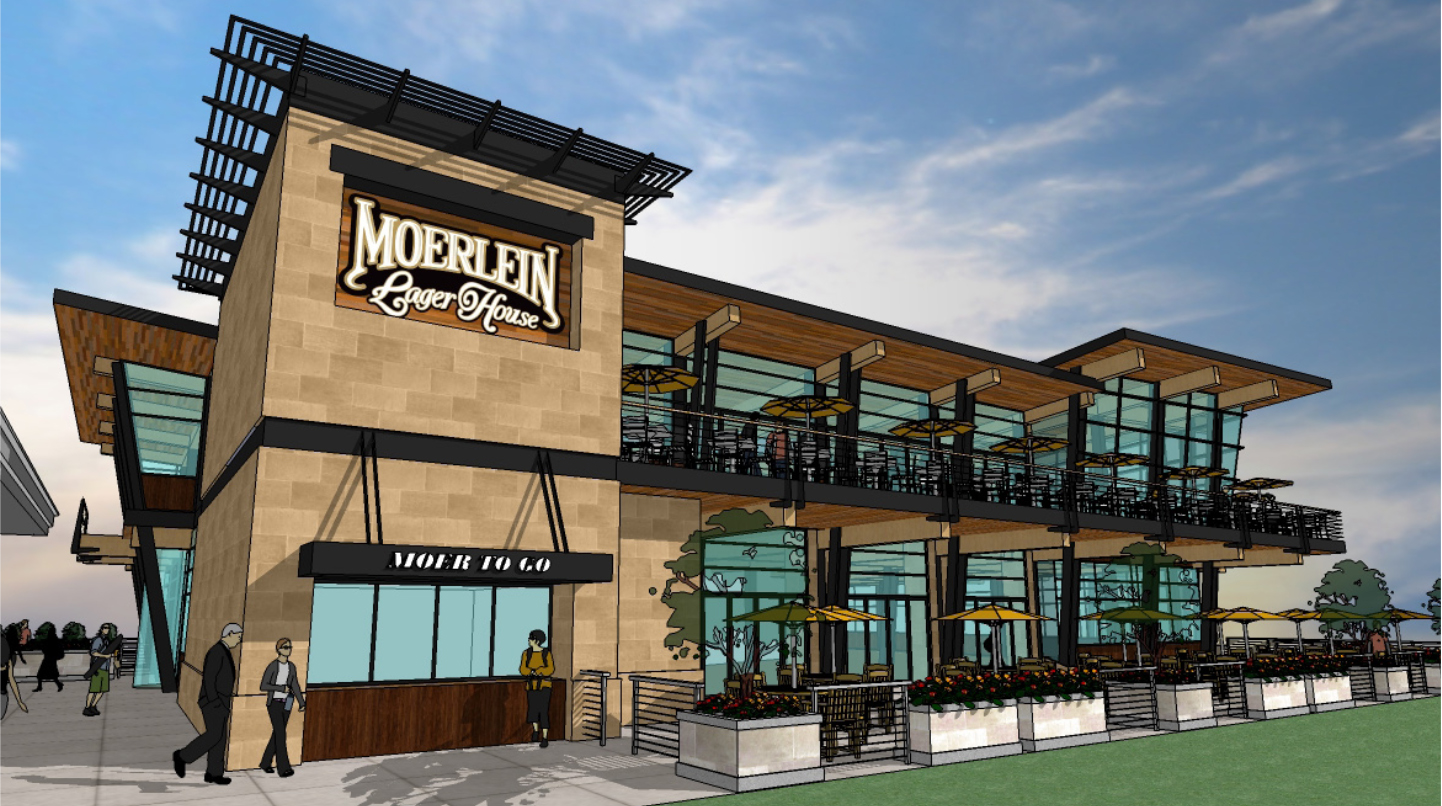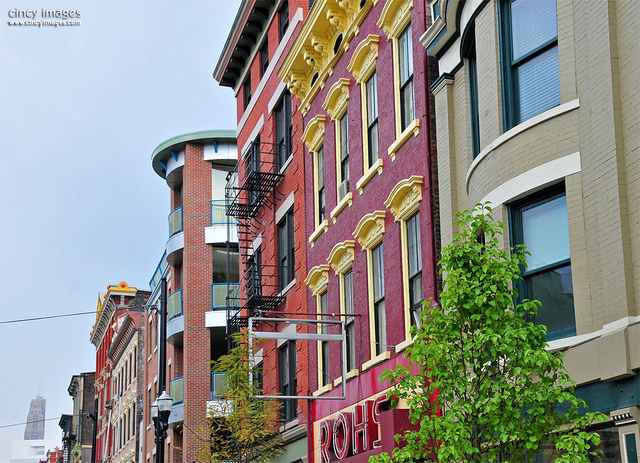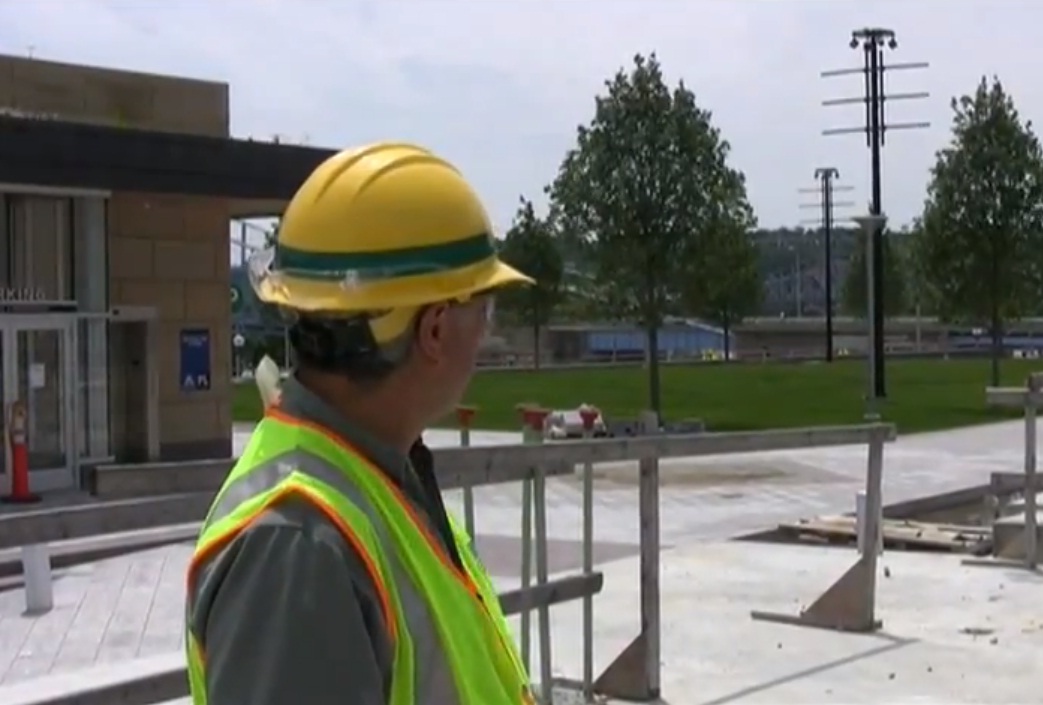The Brent Spence Bridge project has been a lingering issue regionally for the past several years. The recent elevation of the $2-3 billion project by President Obama now places the replacement and rehabilitation of the 48-year-old Ohio River span on the national radar.
While all of the political debate and media coverage has been ongoing, so has development of final design options for new bridge to be built immediately west of the current Brent Spence Bridge. The six design options presented in February 2010 have now been narrowed to three finalists.
The first option (video) is a contemporary arch design similar to the Daniel Carter Beard Bridge (Big Mac Bridge) to the east. The design is favored by many for its classic look, and the opportunity it presents to create a balanced bookend to the cluster of bridges spanning the Ohio River through the region’s urban core.



Option 1 as seen from the west [LEFT], option 2 as seen from the top deck looking north [MIDDLE], and option 3 as seen from above [RIGHT].
Option two (video) is a standard cable stayed design that includes two prominent towers. The design would be similar to other bridges throughout the United States, and others planned along the Ohio River.
The third option (video) is the boldest, and most expensive, of the three alternatives. The cable stayed bridge would include just one tower structure reaching hundreds of feet into the sky and rivaling some of the city’s tallest office towers for prowess amongst Cincinnati’s famous skyline.
Complete funding and a function funding structure have yet to be identified for the Brent Spence Bridge project. Meanwhile, the designs developed by Parsons Brinkerhoff and Rosales + Partners continue to move forward. What is your preference of the three finalists?







